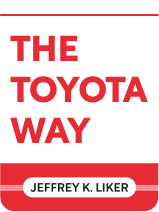

This article is an excerpt from the Shortform book guide to "The Toyota Way" by Jeffrey K. Liker. Shortform has the world's best summaries and analyses of books you should be reading.
Like this article? Sign up for a free trial here .
What does genchi genbutsu mean? How does Toyota use this concept to fix problems during manufacturing?
Genchi genbutsu is the Japanese concept of going to the site of the problem to figure out how to fix it. At Toyota, genchi genbutsu is an important principle to follow.
Learn more about how Toyota encourages the genchi genbutsu principle, according to Jeffrey Liker’s book The Toyota Way.
What Is Genchi Genbutsu?
At Toyota, no improvement is complete without intensive testing on the factory floor. This is called genchi genbutsu, Toyota’s cornerstone of practices. In English, it means “go and see for yourself.” When a problem is detected and an andon system is activated, the assembly line stops. Team leaders and other team members run to the location of the problem. They then aim to determine the root cause of the problem and solve it at that same level.
To determine the source of the problem, Toyota employees use the “five whys” technique, continually asking “why?” until they’ve determined the underlying cause of any problems. If the solution is simple, says Liker, they implement it on the spot. To solve more complex problems, Toyota removes employees from the production line. Employees then generate a set of potential solutions and experiment with all of them to see which works best. The experimentation follows a Plan-Do-Check-Act (PDCA) cycle, which has workers generate ideas and continually return to the factory floor to check them.
Toyota’s Poka-Yoke Principle
To make sure that problems stay solved permanently, Toyota standardizes all processes and makes sure they’re robust through poka-yoke (idiot-proofing).
Standardizing processes means that every task at Toyota, no matter how simple or quick, has a detailed set procedure (down to the number of steps you should take when walking from one place to another). Liker comments that when he spent time on a Toyota assembly line, there was a chart by the workstation describing his 45-second job that spelled out 28 separate steps, including photos of each step. These charts and descriptions represent interim steps to be further streamlined through kaizen (continuous improvement).
Poka-yoke devices automatically detect potential or probable mistakes in the execution of a task. For example, one poka-yoke device might shine a light on one bin of parts to make sure the worker selects the correct part. Another device might use a light curtain to detect whether the worker’s hand has moved to the correct bin. If a poka-yoke device detects an error, an alarm sounds, prompting the worker to correct the error.
The Relationship Between Toyota and the Six Sigma Approach to Manufacturing
Toyota’s genchi genbutsu problem-solving process differs from the “Six Sigma” approach to production, which began as a competitive production model from Motorola. (The two approaches later merged into “Lean Six Sigma” in the early 2000s.) In general, Toyota’s lean production methods focus on efficiency, while Six Sigma methods focus on quality. (The name “six sigma” refers to the ideal situation in which the proportion of defects is six standard deviations—sigmas—away from the mean. This means that, in theory, 99.99966% of the time the process will produce a defect-free part).
The Six Sigma Methodology has five stages: Define, Measure, Analyze, Improve, and Control. While there’s some overlap (for example, the “Improve” Six Sigma stage identifies root causes and the “Control” stage is mirrored in Toyota’s standardized processes), Six Sigma is data-driven whereas the Toyota Production System is practical and experiential.

———End of Preview———
Like what you just read? Read the rest of the world's best book summary and analysis of Jeffrey K. Liker's "The Toyota Way" at Shortform .
Here's what you'll find in our full The Toyota Way summary :
- The story of how Toyota became the biggest automaker in the world
- An explanation of Toyota's lean manufacturing process
- Tips on how to apply Toyota's methods to your business






